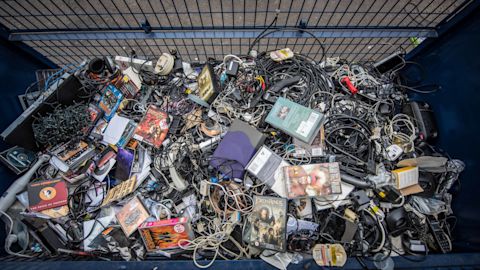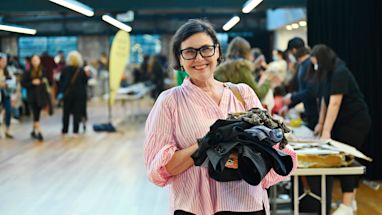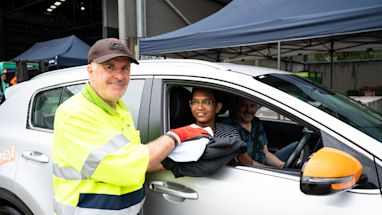Australia is one of the biggest consumers of electronics in the world. As a country, we produce more than 650,000 tonnes of e-waste every year. 88% of the 4 million computers and 3 million TVs bought here every year end up in landfill. Try to resist upgrades and recycle properly using our free e-waste pick-up service.
Tech products are developed with a deliberate lifespan and become outdated due to function or style. This quick cycle of outmoded technology creates catastrophic waste. People are constantly discarding their smartphones, DVD players, computers, TVs and other electronics.

The environmental impact
This poses a number of environmental problems. The first is the increased mining and procuring of materials for new technology. TVs and computers, for example, contain valuable non-renewable resources, including gold, steel and copper.
The second issue is the huge quantity of electronic waste going to landfill. Some of these items can be highly toxic. There’s arsenic in cathode ray tubes and mercury in flat screen TVs. These substances can seep into groundwater, contaminate soil and enter our food supplies.
Take action
Try to reduce your consumption and resist the upgrade if you don’t really need it. Don’t throw your e-waste in the red lid bin. You have a few options:
- If your item is broken, try The Bower’s Repair Café, as it might be returned to working order.
- If your item still works but you just don’t want it, OzRecycle, will help you give it away.
- City of Sydney residents can have their broken, obsolete and unwanted electronics collected from their home with our free pick-up service. Collection days depend on where you live and bookings are essential.

The e-waste we collect is diverted from landfill and around 95% of raw materials recovered are recycled. While many recycling suppliers send e-waste to developing countries, everything we collect is processed here. Leaded glass is separated from other glass and sent to a lead smelter for extraction. Steel castings are recycled locally as scrap metal.
Find out more about the journey of e-waste in the video below.
Published 29 May 2018, updated 17 October 2023



